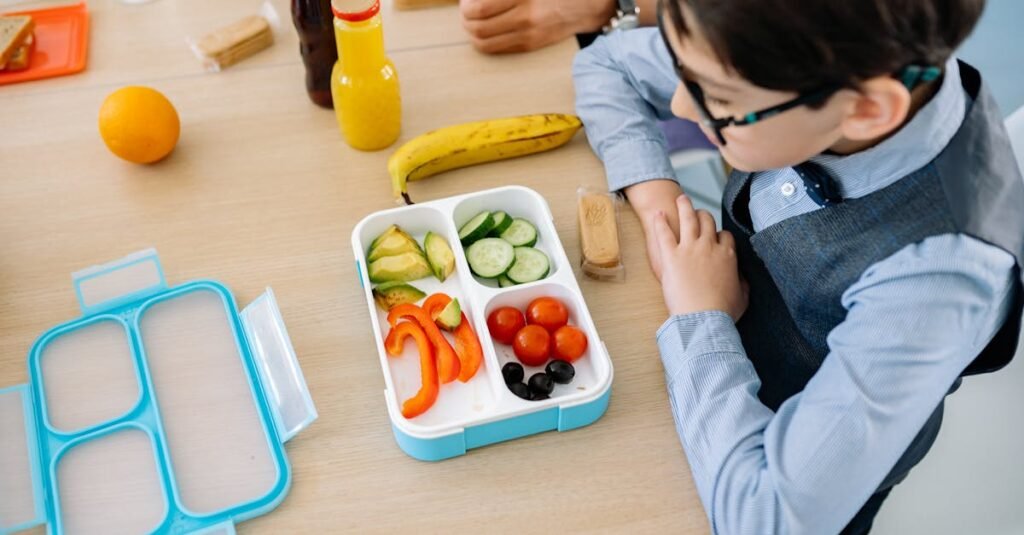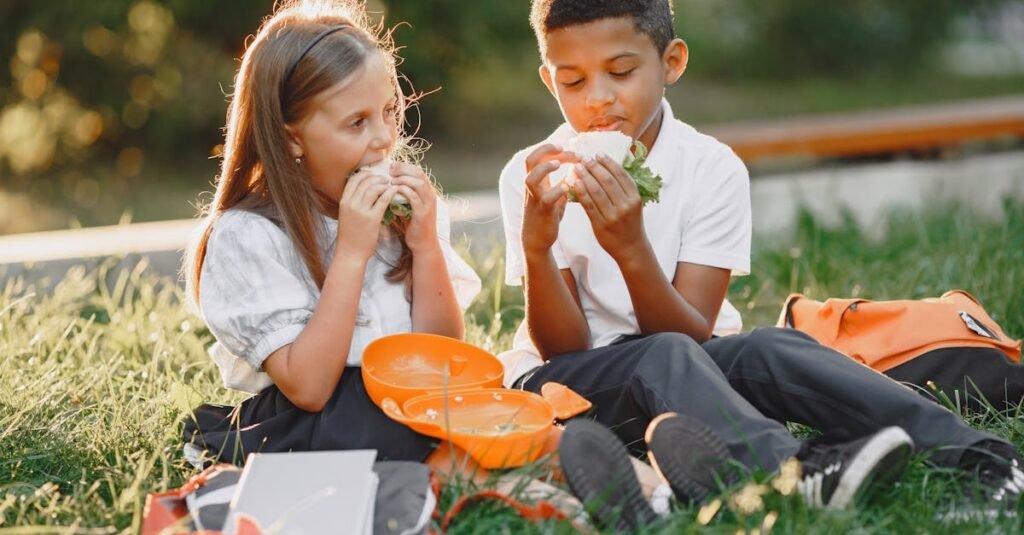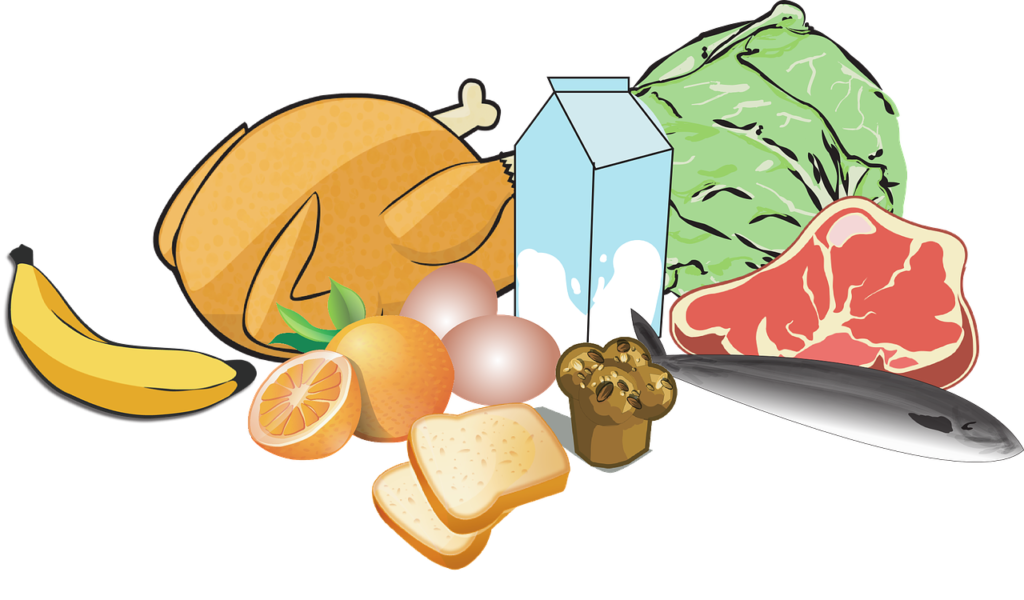Being aware of some safety tips for school picnic is crucial.
School picnics are a time for fun and relaxation, but ensuring your child’s food safety is a must.
Foodborne illnesses are a common risk, especially for children.
According to the CDC, about 1 in 6 Americans suffer from foodborne illnesses each year, with children being particularly vulnerable.
In fact, 40% of food poisoning cases occur in children under 15.
To help parents prevent these risks, we’ve compiled essential safety tips for school picnics.
By following these guidelines, you can ensure that your child enjoys their picnic without the worry of foodborne illnesses.
school Picnic Perfection:
When it comes to packing a picnic for your child, focusing on foods that can remain safe and appetizing throughout the day is essential.
1. Best Foods to Pack

The best choices are non-perishable items that don’t need refrigeration.
Whole fruits like apples, oranges, and bananas are perfect; they’re easy to pack, stay fresh, and provide essential nutrients.
Pre-packaged snacks such as granola bars, nuts, and crackers are also excellent options.
They’re convenient, shelf-stable, and satisfy hunger without the risk of spoilage.
Sandwiches made with shelf-stable fillings are a top pick as well.

Peanut butter and jelly sandwiches are a classic example—they don’t require refrigeration and provide a good mix of protein and carbohydrates to keep kids energized.
You can also consider hummus wraps with veggies, as hummus is a durable alternative to mayonnaise-based spreads.
Dried fruits like raisins or apricots are another smart addition.
They provide a sweet treat without the worry of spoiling.
If your child enjoys dairy, consider cheese sticks made from hard cheeses like cheddar, which can endure room temperature for longer periods compared to soft cheeses.
2. What to Avoid:
While some foods might seem like great picnic options, they can pose a risk if not handled properly.
Mayonnaise-based salads—such as tuna, egg, or chicken salad—are particularly dangerous because they can quickly become breeding grounds for bacteria if left out in warm conditions.
Deli meats like ham or turkey also require constant refrigeration and can spoil within hours if left in the heat.
Dairy products are another category to approach with caution.
While hard cheeses may last longer, soft cheeses, milk, yogurt, and cream-based dips can spoil rapidly without proper cooling.
Even if packed with ice packs, these items can become unsafe if exposed to warm temperatures for too long.
Egg-based dishes like quiches or boiled eggs should also be avoided, as they are particularly sensitive to temperature changes.
Similarly, seafood dishes are high-risk and can lead to severe food poisoning if not stored and handled correctly.
Take care about TCS foods

When packing for a school picnic, it’s important to avoid foods that can spoil quickly, especially Time/Temperature Control for Safety (TCS) foods.
TCS foods are those that require specific temperatures to prevent bacterial growth.
If these foods aren’t kept at the right temperature, they can become unsafe to eat, making them poor choices for picnics.
Some common TCS foods include dairy products, meat, poultry, seafood, and eggs.
You can find more details about TCS foods and how to control them here in this post.
Packing Tips to Keep school picnics Safe
Proper packing is crucial to ensuring that your child’s food stays safe during a school picnic.
Here are some essential tips to help you pack food safely:
1- Use Insulated Lunch Boxes and Ice Packs:

Insulated lunch boxes help maintain the temperature of the food, keeping cold items cold and hot items hot.
Include ice packs to ensure perishable items, like fruits or cheese, stay cool.
Example: Place a frozen juice box in the lunch box; it will thaw by lunchtime and help keep everything else cool.
2. Pack Foods in Airtight Containers:
Airtight containers prevent leaks and keep food fresh.
This is especially important for items like salads or cut fruits, which can spoil quickly if exposed to air.
Example: Use a small airtight container for apple slices to prevent them from browning and to keep them fresh until your child is ready to eat.
3. Separate Raw and Cooked Foods:
Cross-contamination can lead to foodborne illnesses.
Always separate raw foods from ready-to-eat items.
Example: If packing raw vegetables to be eaten with dip, ensure they’re in a separate container from sandwiches or other prepared foods.
4. Choose Shelf-Stable Foods:
Opt for foods that don’t require refrigeration, such as whole fruits, granola bars, or nut butters.
These items stay safe at room temperature and are less likely to spoil.
5. Communicate with Your Child’s Teacher:

Keep an open communication channel with your child’s teacher to ensure they understand any special instructions regarding food safety.
This could include reminders about keeping lunch boxes in a cool place or ensuring your child eats perishable items first.
Example: Inform the teacher if your child’s lunch contains items that need to stay cold, so they can assist in storing the lunch box appropriately.
By following these packing tips and maintaining communication with your child’s school, you can help ensure that their picnic food remains safe and enjoyable throughout the day.
Teaching Children Food Safety and Hygiene Tips

Teaching your child food safety and hygiene is essential, especially when preparing for a school picnic.
Understanding the basics of food safety helps protect them from foodborne illnesses and ensures they make safer choices.
Start with simple lessons like washing hands before eating, not sharing food, and knowing when food looks unsafe.
By reinforcing these safety tips for school picnics, you empower your child to handle food safely, even when you’re not there to guide them.
This knowledge will keep them healthy and confident during their school picnic and beyond.
Conclusion
Ensuring food safety during school picnics is a shared responsibility between parents and schools.
By carefully choosing the right foods, packing them safely, and teaching children good hygiene practices, you can significantly reduce the risk of foodborne illnesses.
Schools can support this effort by monitoring food storage and serving practices and maintaining clear communication with parents.
Following these safety tips for school picnics will help ensure that your child has a fun, enjoyable, and safe experience.
Remember, food safety doesn’t have to be complicated—simple choices like opting for non-perishable items, using insulated containers, and educating children on hygiene can make a big difference.
Keep these safety tips for school picnics in mind, and you’ll be well-prepared for any outing.
Ultimately, a little planning goes a long way in ensuring that school picnics are both safe and memorable for everyone involved.



